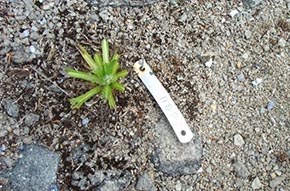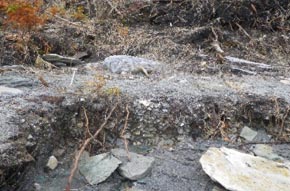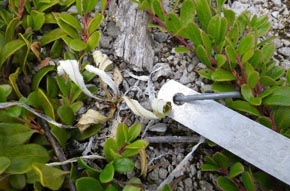Main threats
Mingan Archipelago National Park Reserve
The Mingan Thistle colonies face several challenges that threaten their survival.
Low abundance
Ten of the twelve colonies found in the park are considered too small to survive in the long term.
Low production of blossoming plants
At the Mingan Archipelago National Park Reserve, less than 3% of the plants blossom before dying. There are only 2 to 43 flowering plants per year. It is a small amount, considering that the only way it can reproduce relies on the seeds.
Storms
In recent years, most colonies have been seriously affected by storms, whose impacts are magnified by climate change. These storms eroded the shoreline or buried the plants under as much as 50 cm of debris (sand, rocks, wood, plants). As a result, the available habitat is cut down.
Did you know…?
Erosion due to the storm of December 2016 explains the loss of more than 80% of the plants in two of the colonies.
Forest growth
In some colonies, the forest has grown to a point where it completely covers the habitat occupied by the Mingan Thistle. The plants are no longer able to live there.
Weather conditions
Low snow area can have a significant negative impact on the Mingan Thistle. Indeed, the bud ensuring its survival is near the surface of the soil and needs snow in order to be adequately protected from the cold. Drought is also a cause of mortality.
Impact of wildlife
Hares may graze the majority of Mingan Thistle plants in a colony or two. Fortunately, this situation does not happen often and most plants survive. In places, the ants remove the plants by digging to develop their anthills and that reduces the habitat available for the Mingan Thistle.



Related links
- Date modified :